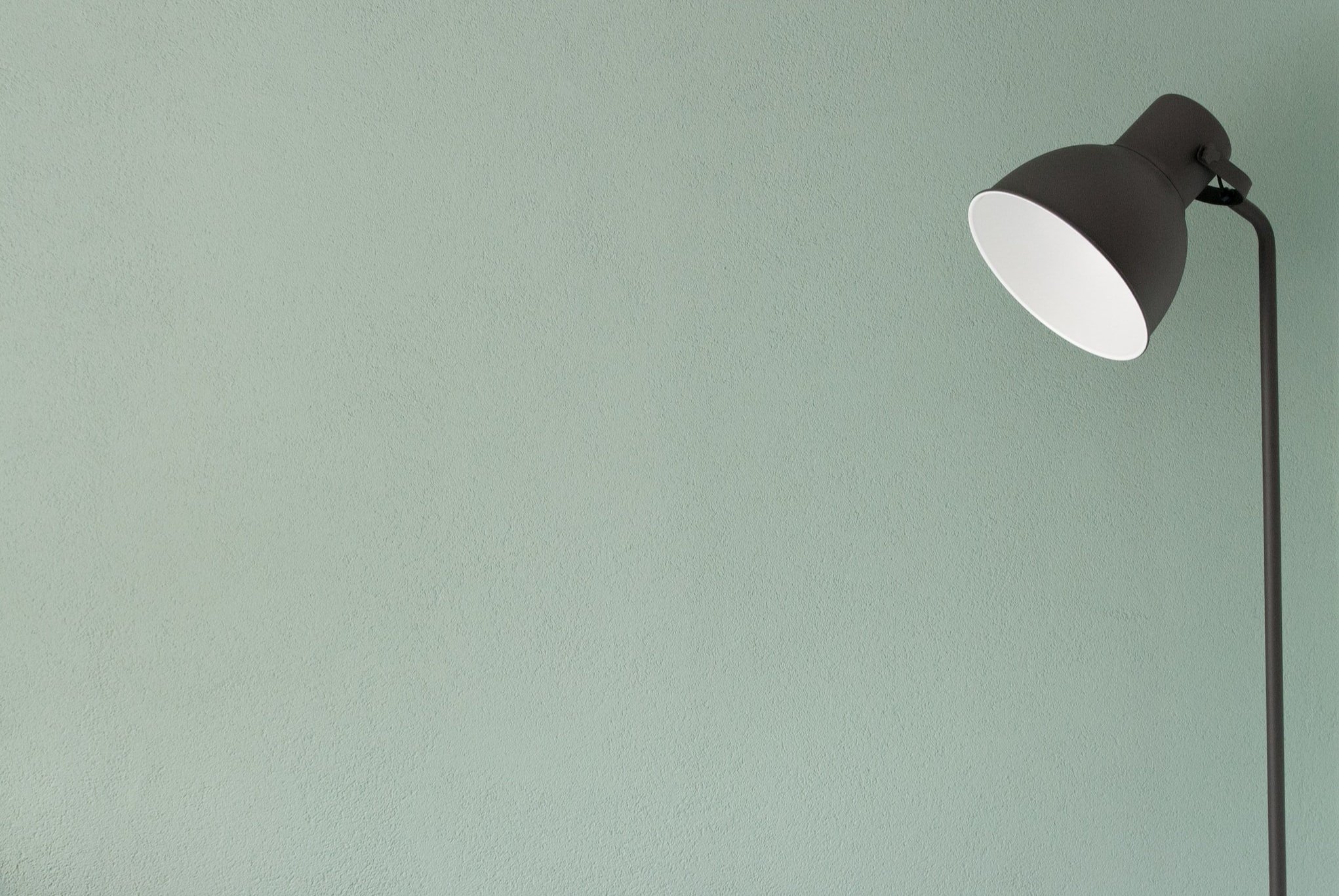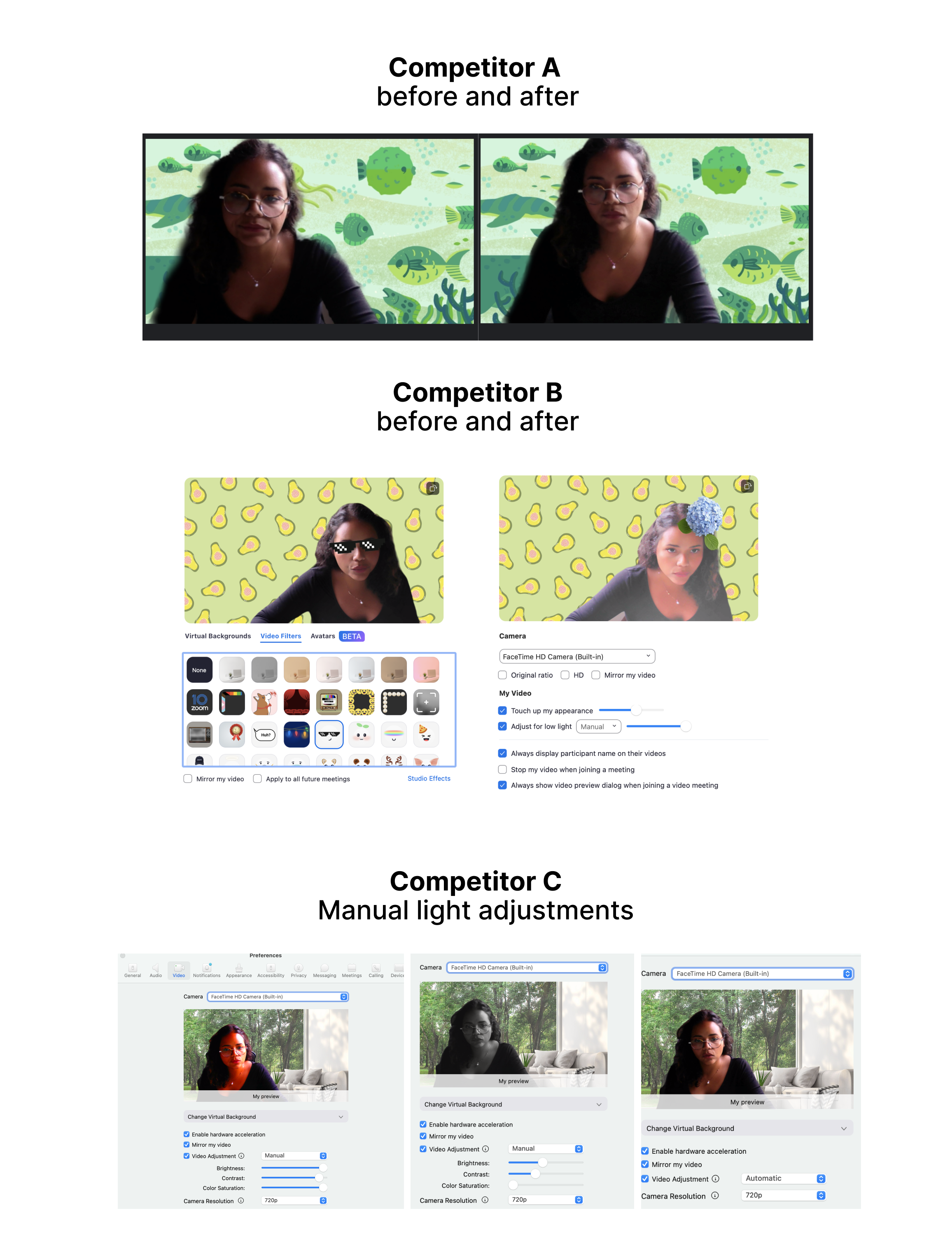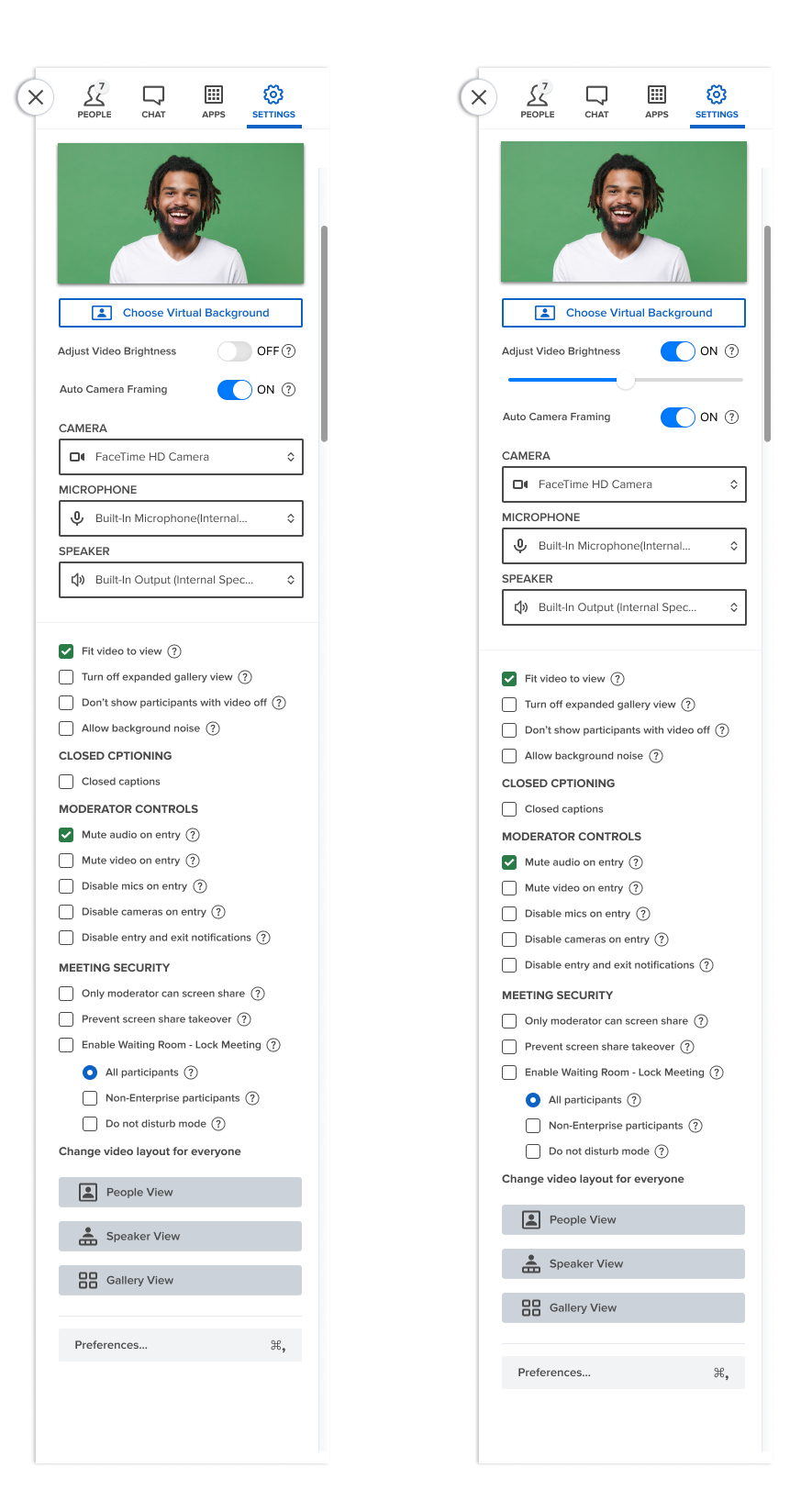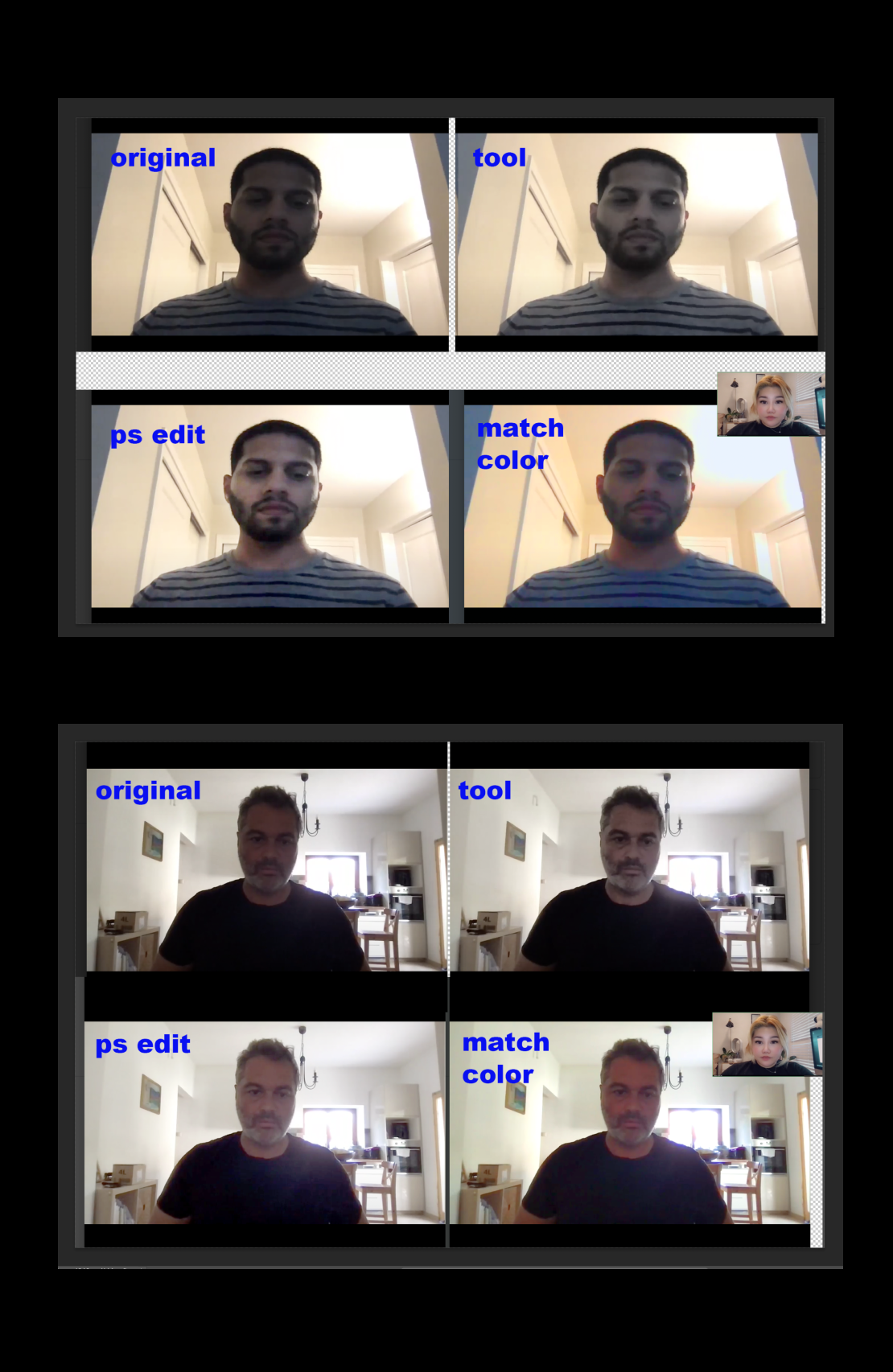
Lighting Adjustment Feature and Advocating for Design Ethics.
The objective of this case study was to introduce a new feature that empowers users to adjust the brightness of their camera feed, enhancing video quality in various lighting conditions, while addressing design ethics concerns. This feature aimed to close the feature gap with competitors like Zoom, Google Meet, and Webex.
Role
UX researcher
Visual Design
User Experience
Deliverables
Platforms
Mac Os
Windows
Timeframe
3 weeks
July 2022 - August 2022

More than one problem…
Initially, the primary issue we aimed to address was user complaints about blurry videos in low light or backlight conditions.
However, a more profound challenge emerged:
Representation of Diverse Complexions: Camera technology historically favored lighter skin tones, neglecting the wide spectrum of human complexions, particularly those with darker skin tones. This issue extended beyond our platform and was pervasive across the video conferencing industry.
Defining the problem
During a comprehensive competitive analysis, I observed that the lighting effects in these apps were inaccurately representing people of color, including myself. This issue was prevalent across all competing products in the video conferencing industry.
To tackle this problem, I initiated a broader conversation by advocating that the issue extended beyond blurry images or videos. I began to conceptualize a solution that would ensure users with darker skin tones could be faithfully portrayed in all their live video conferences, irrespective of lighting conditions or background colors (or lack thereof).
To effectively advocate for change, I defined the issue as follows:
The range for editing lighting adjustment must be carefully balanced to prevent washed-out images.
Automatic lighting adjustment settings should accurately represent a variety of skin tones.
Offering control over brightness, contrast, and color saturation through a single slider to ensure accurate skin tone representation.
Further Research.
In order to be well prepared to advocate for design ethics when presenting my design choices, I looked further into the intersection of colorism and technology and found the following.
Historically, since the invention of camera and film the technology has been set to fit lighter skin tones. These issues persisted ranging from the 1940’s to 1990’s and it’s still lingering on today. This Vox video breaks it down best.
Fortunately, I also found that there is work being done to address the issue. Google’s “Skin tone Research @Google Ai” and their commitment to improve skin tone representation across google demonstrates that there is vast need for change. Amongst the most important information I found Dr. Monk’s research. “The research focuses on how factors such as skin tone, race and ethnicity affect inequality. Dr. Monk began this research in part to build on the most prominently used skin tone scale, the Fitzpatrick Scale. Created in 1975 and made up of six broad shades, it was meant to be a jumping off point for medically categorizing skin type. The technology industry widely adopted it and applied it to skin tones and it became the standard. It’s what most AI systems use to measure skin tone.”
Dr.Monk’s Skin Tone Scale.
Design Solution
After presenting the research to our team of Project Manager, Developers, Design team and other stakeholders. we decided on the following approach:
Careful assessment of the lighting adjustment range to ensure it accommodates all skin tones.
Providing a single slider for brightness, contrast, and color saturation to avoid user confusion and inaccuracies.
Adjusting the automatic lighting settings to match user preferences when toggling the video brightness adjustment.
In meeting settings controls for lighting adjustment design.
Before and after
Before the design changes, our software struggled to accurately adjust lighting. As noted on the images below.
BlueJeans lighting adjustment demo with developers
Final Design (After)
The design for the BlueJeans desktop app lighting adjustment feature was a great improvement to what was already in place. It’s one of the most widely used features in the Bluejeans app. The data analysis shows that the users adjusted their lighting 200k+ times in the last 3 months highlighting its importance.
Impact and Design Ethics: While there's much work to be done in the industry, our commitment to accurately represent a diversity of skin tones is paramount. By focusing on this, I continue to fulfill my role as a designer, serving underserved communities, and upholding design ethics to create a more inclusive product.
What I learned
Research in Design should never be limited.
As designers we can get used to a certain workflow. A competitive analysis, user testing a so forth. With this featured I learned that it’s important to look at the literature as well.
A Passion for Design Ethics.
With great power comes great responsibility. Everything I do has always been centered in helping other. With this feature I was reminded of just how much I deeply and truly enjoy advocating for underserved.






